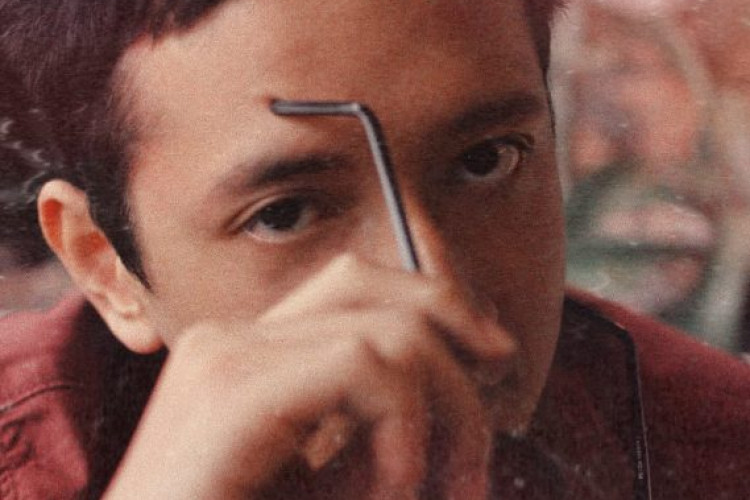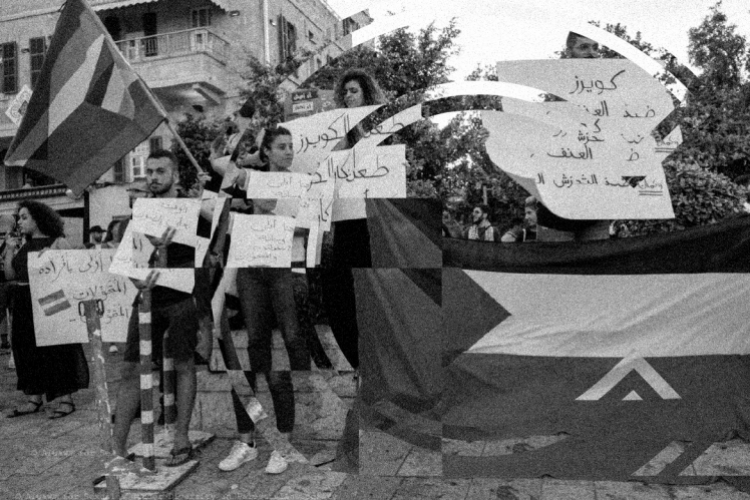South East Asian Musical Treasures with Maft Sai
Chandra Drews (C) interviews Maft Sai (M) of Bangkok's ZudRangMa Records
by Ken Jenie
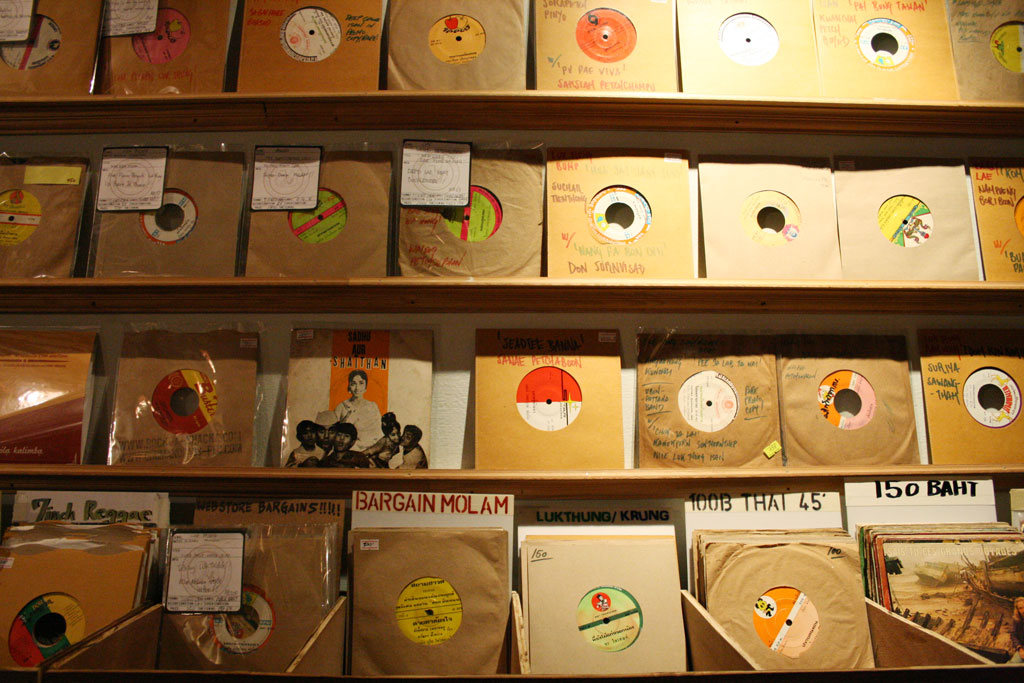
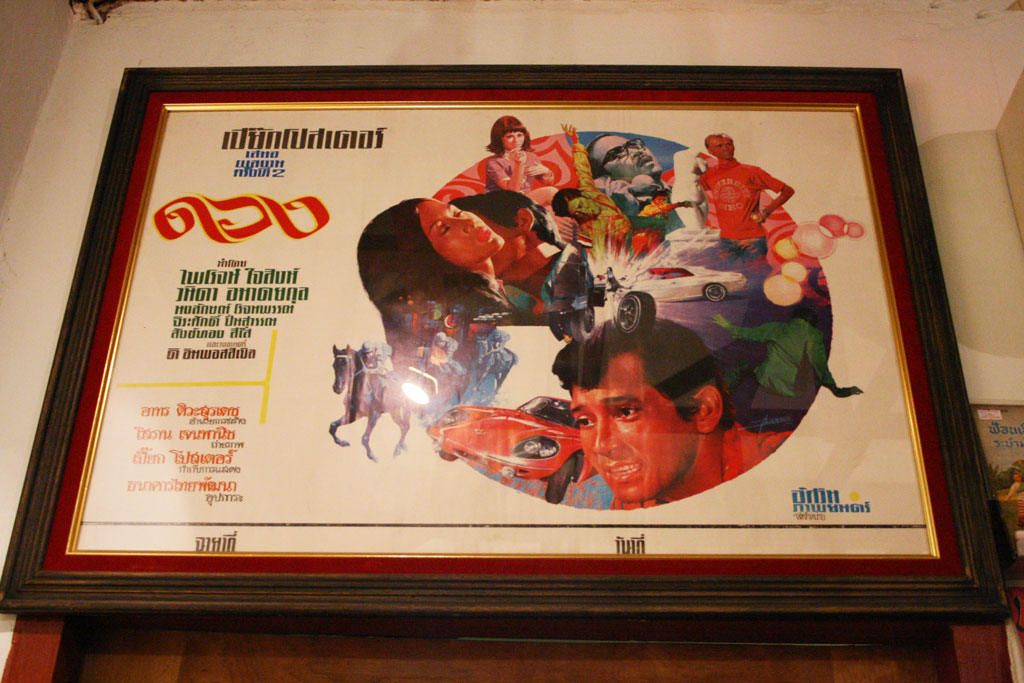
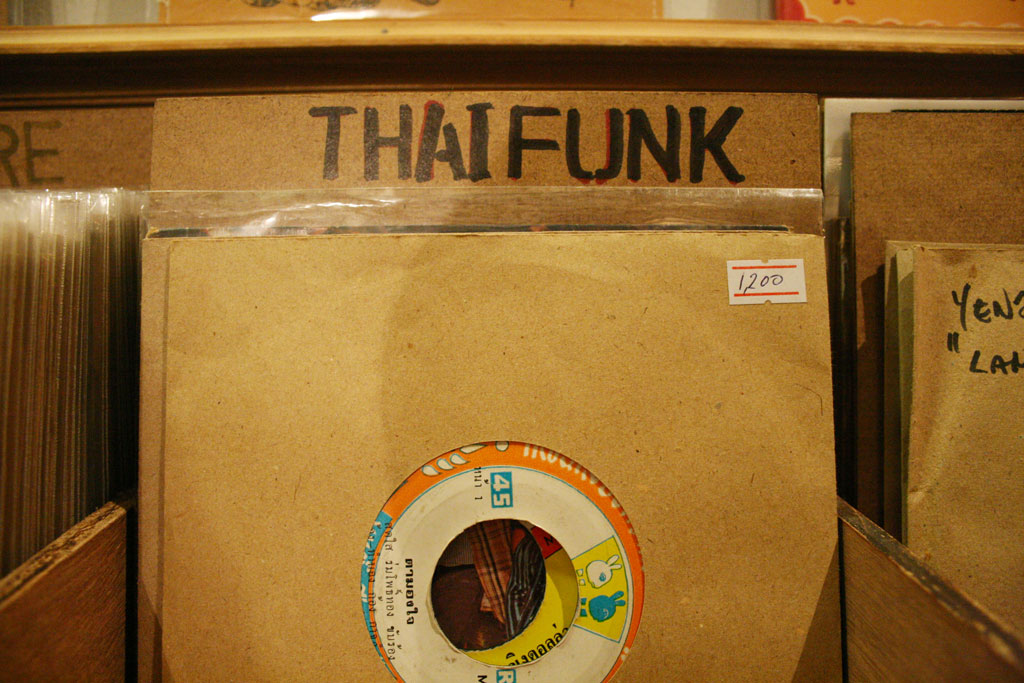
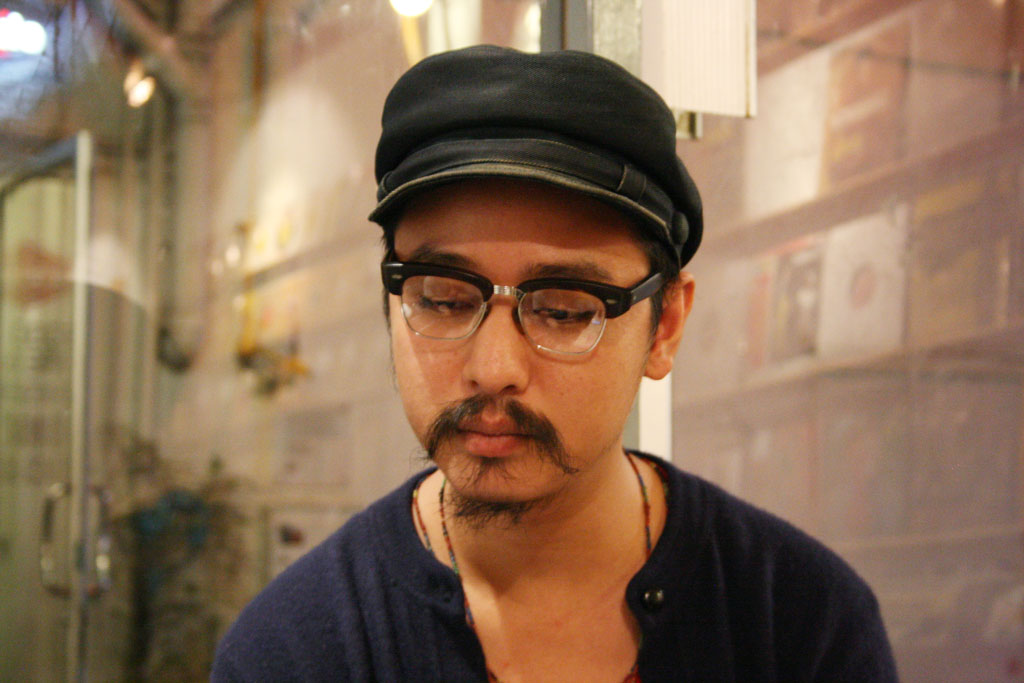
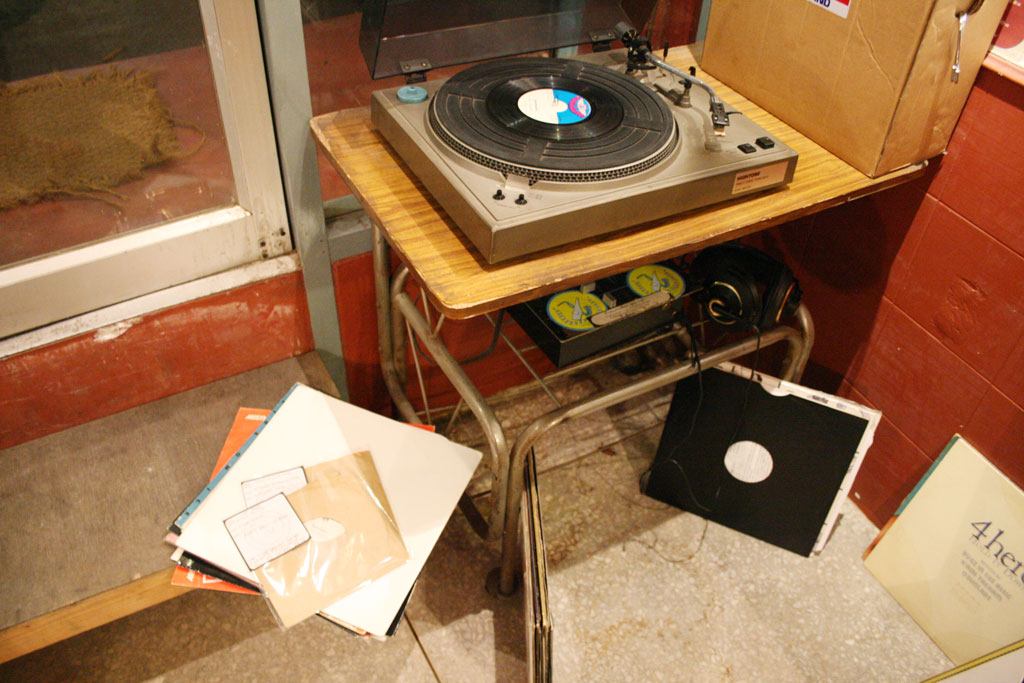
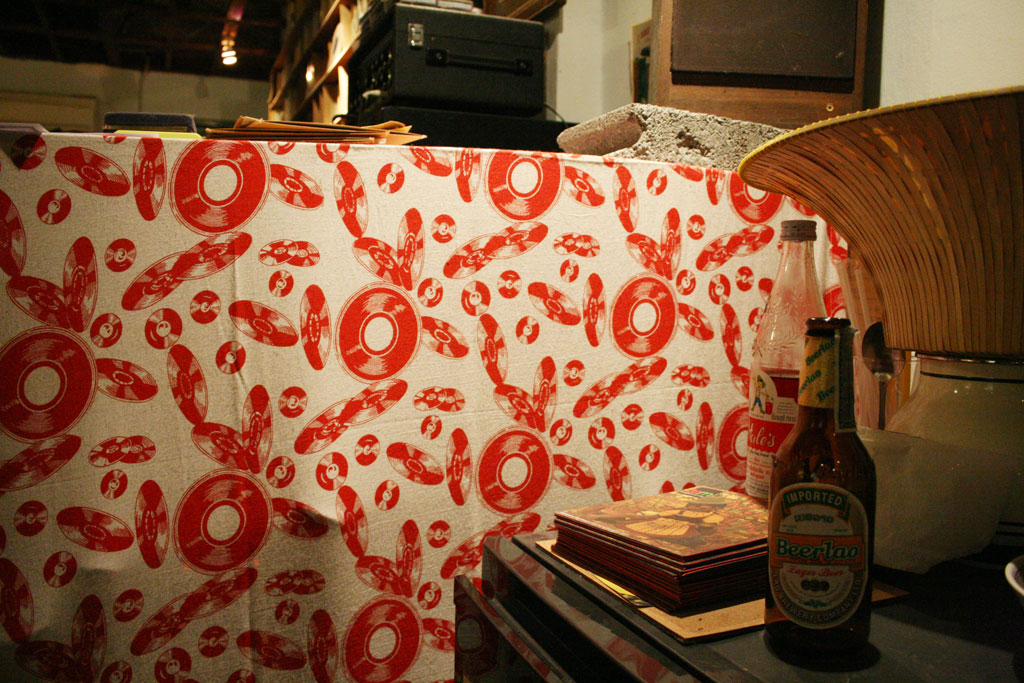
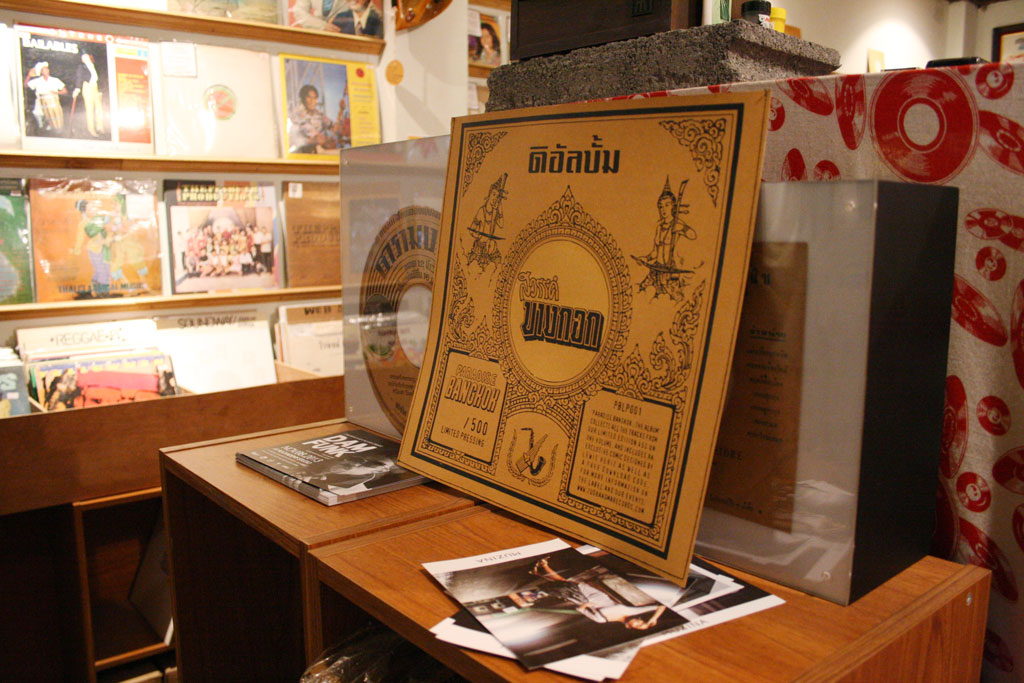
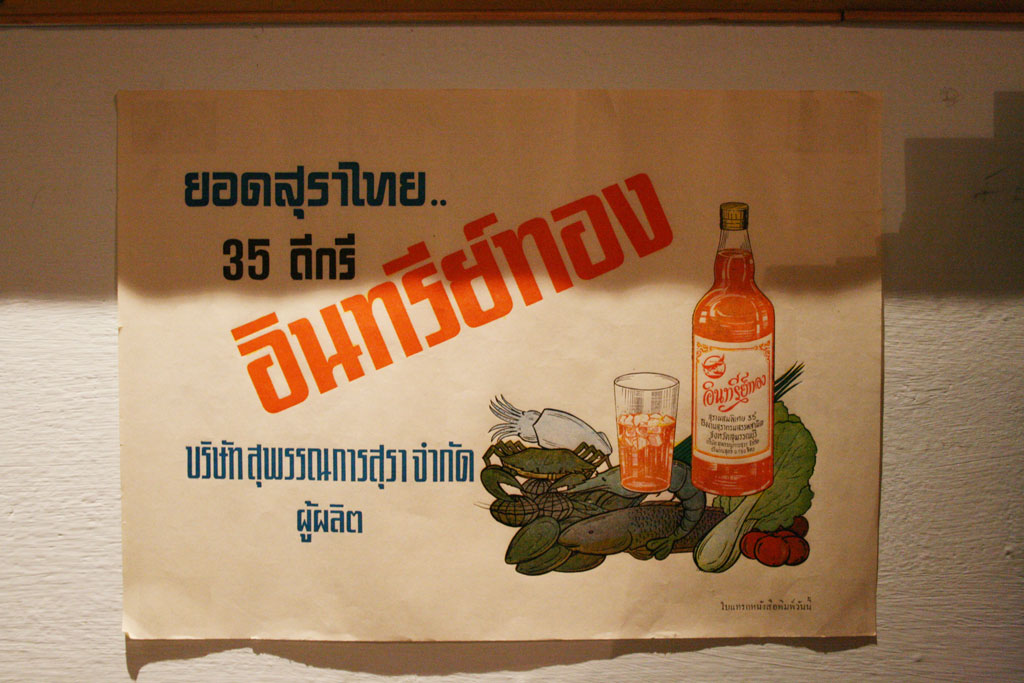
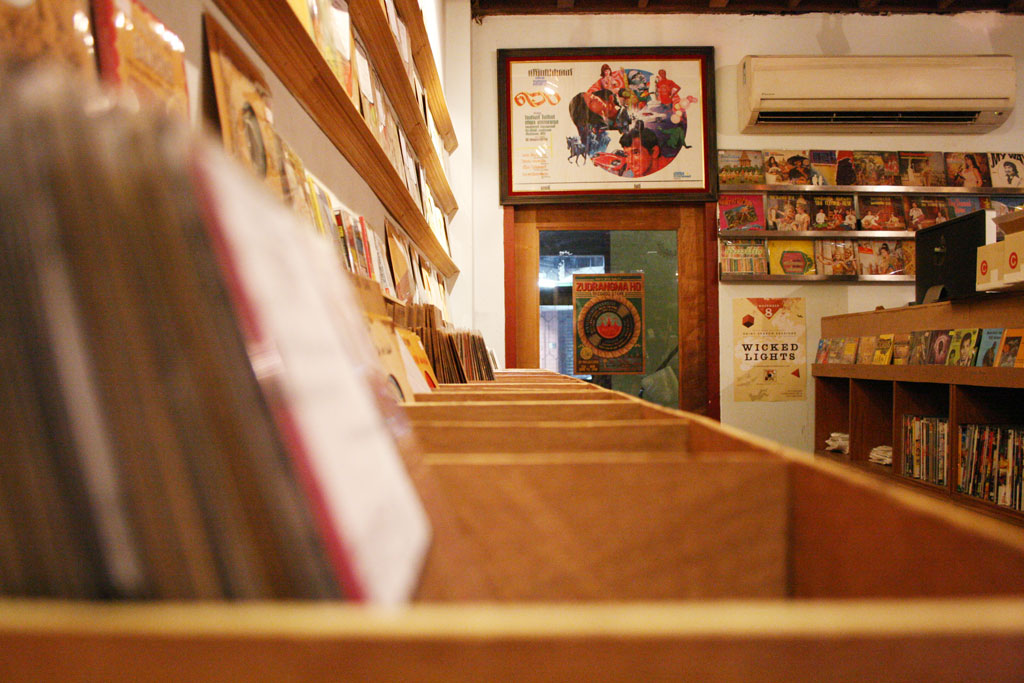
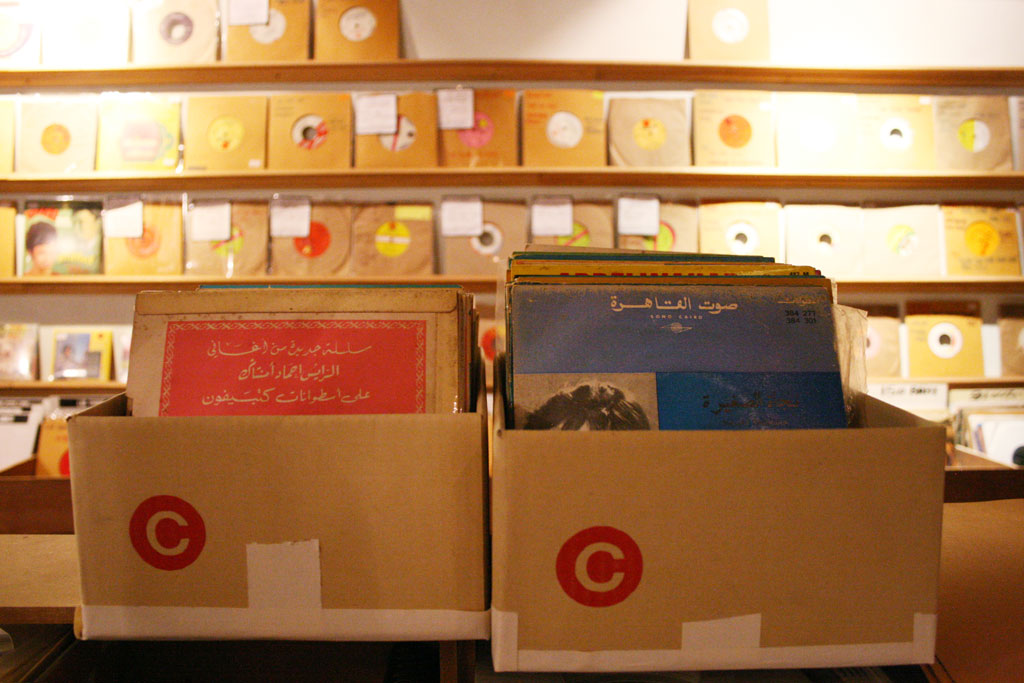
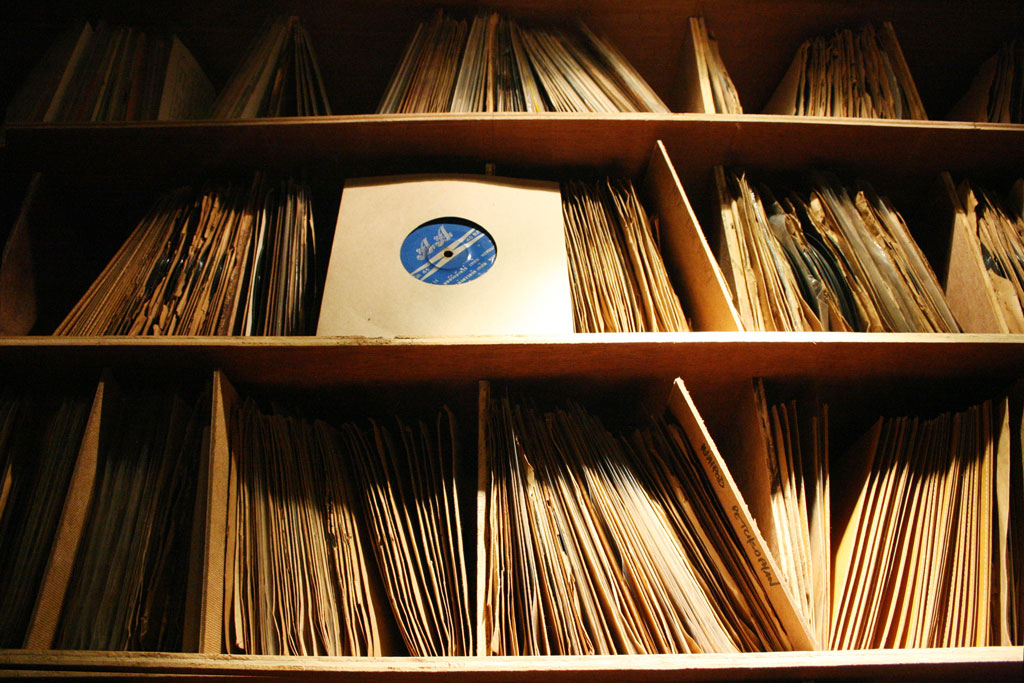
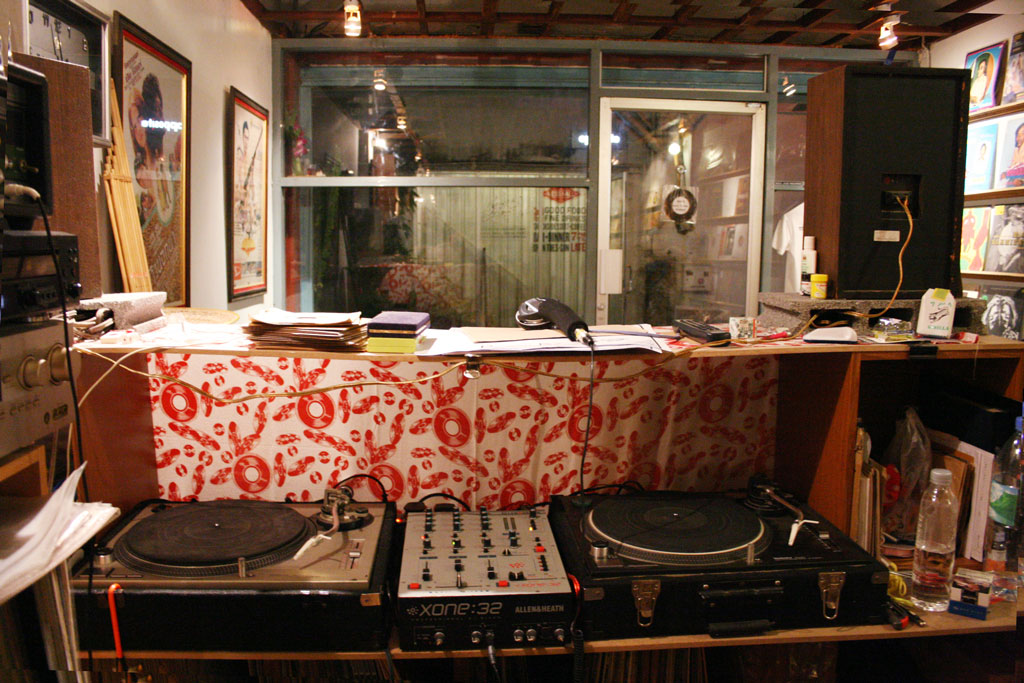
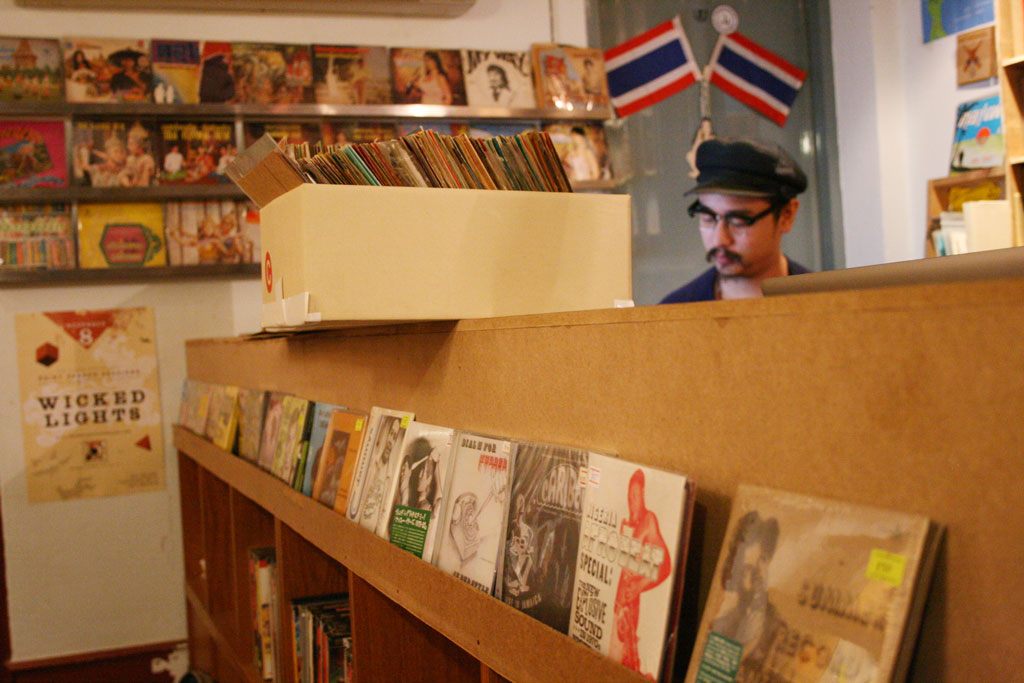
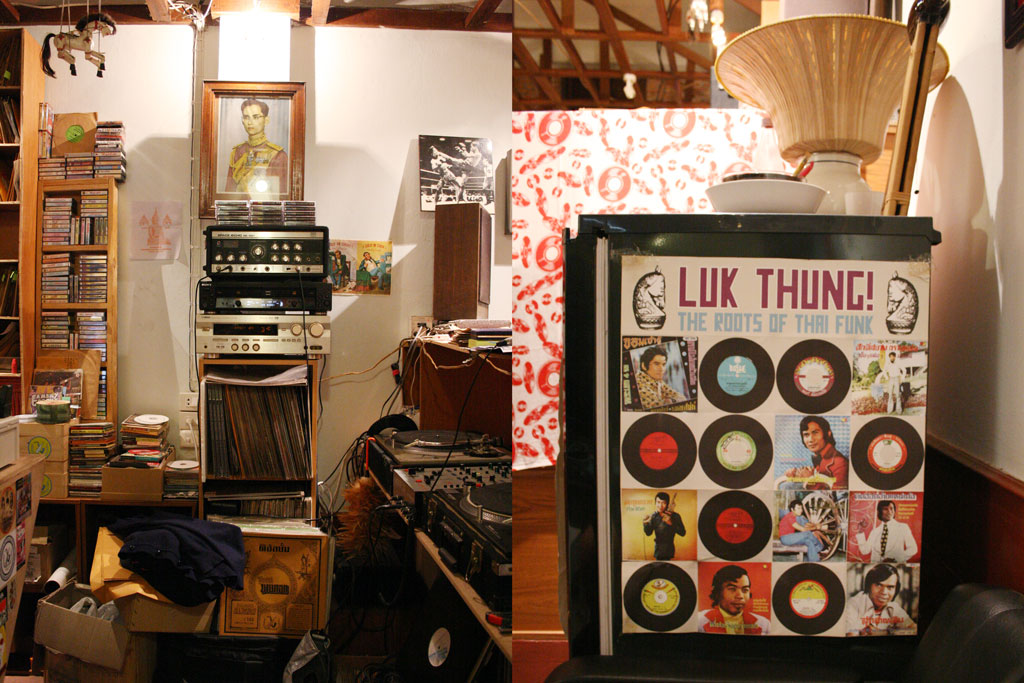
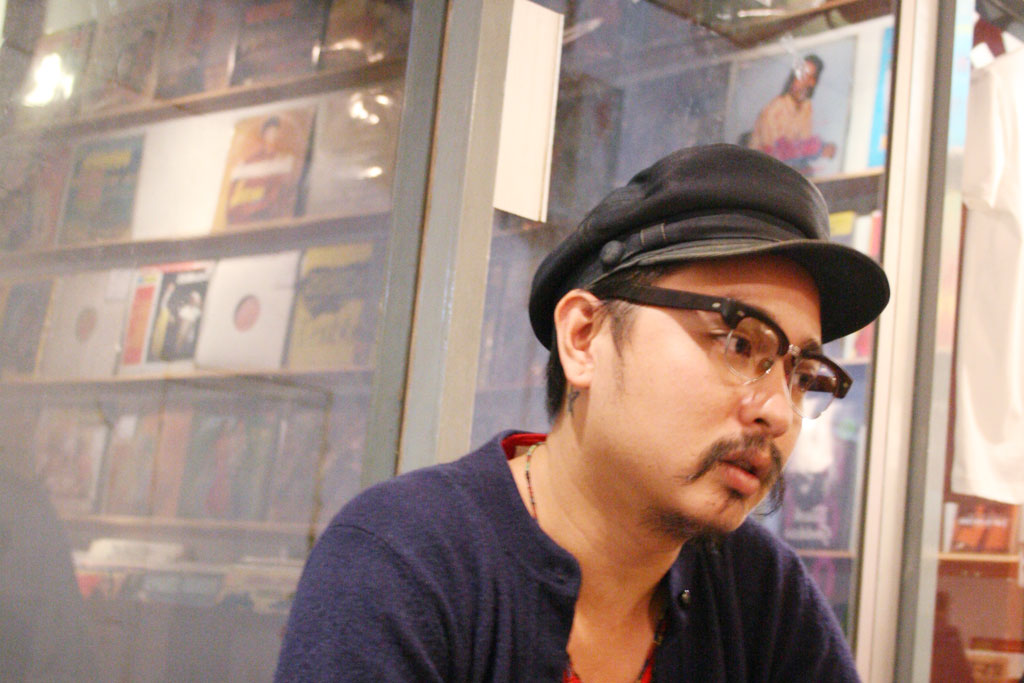
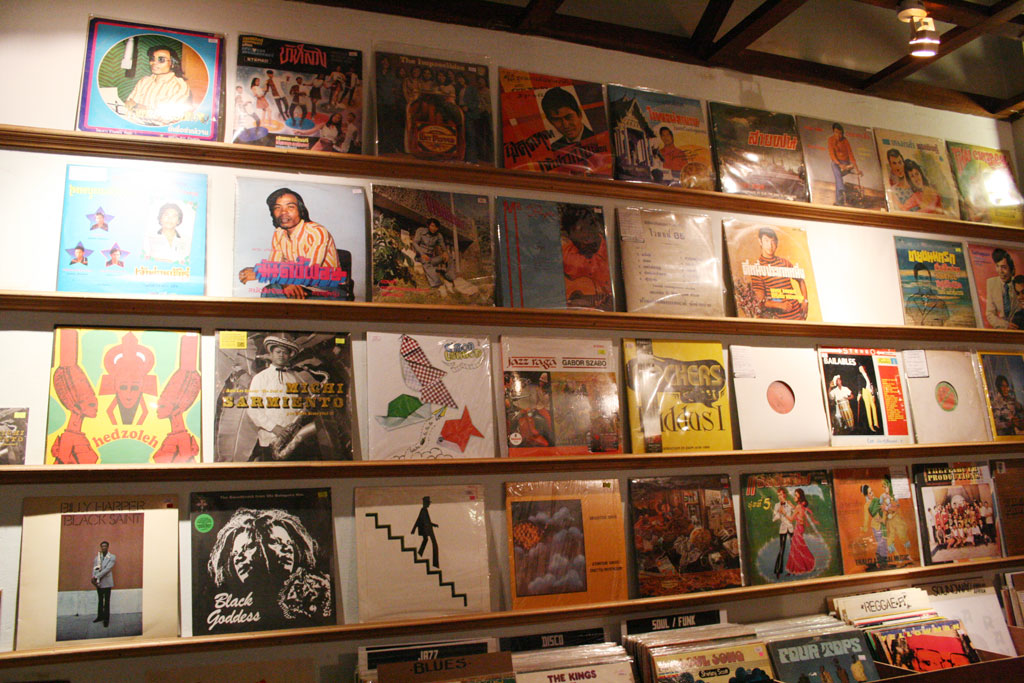
C
First of all, is there any special meaning to your stage name? Maft Sai, what does it mean?
M
It doesn’t mean anything really. The name came up when I was in the UK. My Irish friend kept calling me Maft Sai The Black Horse when he was drunk. Since then I started using the name Maft Sai The Black Horse, and 2 years later I was still using the name. It was made out of gibberish, so it doesn’t really mean shit. I started using the name and I just continued using it.
C
How did you get interested in music in general? Was it from your family?
M
Not really, it was more due to the fact that I went to live abroad. So meeting new friends, getting into friend’s interest: DJ-ing, buying records, turntables, which ended up with me talking about and sharing music with them. They introduced me to a lot of things in music.
Back in the day I used to buy different kinds of music, but not collecting records. When I lived in the UK, it was easier than here [Thailand], as they have records stores everywhere, so I started buying records. I started buying the funk, jazz-funk, disco, some hip-hop and later on deep house, Detroit techno, that kind of stuff. Afterwards when you DJ you start playing various types of music and subsequently your tastes become more diverse. For instance, from listening and playing house music I started to collect more African music, since New York house has a lot of African influences. So I started listening to African music from Mali, Egypt, Ethiopia, and also reggae. Basically new things that excite me, stuff I’ve never heard before.
When I came back I still kept the habit of buying records. I was always familiar with Thai music and records, as every time I come back from the UK I went to the record shops in Bangkok, but at that time it was mostly funk covers.
C
Before you left for the UK, did you listen to Thai music as well? What did you listen to?
M
Before I left for UK I was into this band called The Impossibles, a sort of Thai funk band. Sometimes they played more original work, but usually it’s quite influenced by western music. Since I left UK to move back here, I start to discover more Luk Thung and Mor Lam, which is much more ‘rootsy’.
C
We’ll get back into that. How did you end up in the UK?
M
At the time I went to study. I studied fashion promotion. I was also studying and DJ-ing at the same time. Then I found I enjoyed playing music more than working in the fashion business, so that was that. It came to a point that I can make a living out of music, so why did I need to do something I didn’t 100% like to do?
The fashion course I took was not really about fashion, it is also about how to promote certain things like graphics, marketing, that kind of stuff, so it is useful for my career now. But at the time, I was like, enough of fashion. With fashion you need to present more. With music, you put it on, people like it, they dance, if they don’t like it, they just tell the DJ to fuck off. It’s very simple.
C
When did you return from the UK?
M
I got back here in 2007.
C
And till when did this (ZudRangMa) appear?
M
I actually got back here to study sound engineering. After I did the course, I realized I rather pay someone to do it (laughs). I’m not the type of person who calculates the frequency, numbers, and all that shit. So I was, lets start something.
So I started doing compilations, which evolved into the ZudRangMa label with the help of fellow music enthusiast Masa Nimawaya, at the end of 2007.
C
But no physical shop?
M
No. The label started with us releasing a mix CD, a compilation CD, then we tried to sell it here for some time, but people looked down at the music, calling it ‘taxi driver’s music’. We were like ‘fuck’. So we started to send it to my friends in the UK. They quite liked it. They came saying, if you want we could sell it in shops like Honest Jon’s. They brought it in, and then the label actually started from there. More orders came in, so we started making a more proper label.
The first shop opened in 2010.
C
The first shop you say?
M
Yeah, this is the third location. It moved twice already. Basically in 2009 we started Paradise Bangkok, a DJ/party event, and it was to help us, promote what we do. We just played Thai music, and music from around the world that is related to the Thai stuff.
In 2010, I needed new material, so I travelled quite a lot, going around the country just to find records. And when I found more than 1 copy, and you know if you don’t take it now, they are going to either throw it away or destroy it in 2 years. So we just started taking all.
And after a while I would have more than 10 copies of a record. And I didn’t need 10 copies at home, so the idea of the shop started there. It would be a platform for people with similar interest; they can come and have a conversation; more like a community.
The first shop was near Siam Square, and around that time the shop was on a small street and it was in a dodgy area, kids were sniffing glue and stuff. Location wise it was shit. The first shop was more like a bar; selling coffee, espressos, records, chilling out, and afterwards I was like, let’s focus on music alone.
So we opened the second record shop in Thong Lo, it was very small; it was just stocked to the ceilings with wax. We stayed there for a year and then we just got too much stuff, we needed to find a bigger space. Then I saw this place, so we moved in here.
C
When did you move here?
M
I think it was around 2 years ago.
C
You already mentioned Paradise Bangkok. When did Isan Dancehall start?
M
At first Paradise Bangkok started as a DJ event with my partner Chris (Menist) and myself, playing records. Then a year after Paradise Bangkok started, we started doing live performances. It came to a time when we thought, “all this music we’ve been playing, we would like to see the artist do it live”. So we started looking out for artists, the band, to put it on for Paradise Bangkok. Then we changed Paradise Bangkok to become more as a live event. Sometimes its a few hours of DJs, then live music.
C
That’s under Paradise Bangkok?
M
Yup, Paradise Bangkok. After it changed its direction to live music, we noticed that we still had DJs coming in all the time. So we started Isan Dancehall, so it could have more of a Sound System vibe with a DJ setup, and Paradise Bangkok would be more for live bands.
C
How did that channel into this most recent band you have? You mentioned you’re going to release a record with Molam International Band.
M
That actually stemmed for a Paradise Bangkok party. It actually came from 2 years of organizing live shows and assembling different musicians from various Isan bands. We started collecting certain musicians from different bands. We have worked with them before, so we just told them the project we tried to develop as well. Not just the traditional stuff, but also with a twist, with more groove added in.
C
What do you do in the band?
M
Mostly producing. It’s more like producing ideas on certain tracks and be at the studio. The way I work with the band, is that we sit down together, we walk through the idea, what they have, what I have, the cover, the original stuff, and we try to mix it in live.
We don’t plan to make it sound like this, or that. Sometimes I prepare the beat by doing production on the computer and get the drummer to play, but mostly its just – we sit down and ‘why don’t we try this’. If it works, it works. If it doesn’t work, then we throw the idea away and continue with a new one.
C
And do you have a good following in Bangkok?
M
When we started the Paradise Bangkok party, it was good timing, because at the time, most of the parties played the same type of music, which is mostly commercial stuff. So when we setup the first Paradise Bangkok, we did 2 posters. It wasn’t very well organized (laughs), but then 200 people turned up, form nowhere.
After that the response from people was very nice, they were dancing all night. They never really listened to this type of music before. Some of the Thai music played was recognized from the lyrics, tracks form back in the day, but what they remembered were the cover versions form the 80s or 90s, which was all digitized with drum machine beats. We played the original stuff, and we got a good response.
C
What did you add on top of it? More of the groove elements?
M
For the band, just the bass lines, it’s the most important thing for me. Sometimes we use more traditional Thai bass lines but we also create new (bass) lines, influenced form Ethiopia, Turkey and other different places.
C
Traditionally it’s like that too? Heavy bass?
M
Yeah, since traditionally the Mor Lam concerts were held in the countryside or sometimes in temples, places where the whole community gathers. And in temples they usually have good and big sound systems, like they have in Jamaica. It’s always the bass that kicks into the people.
C
Yeah, I’m just surprised because I’m comparing it with Indonesian music, where a lot of the times bass plays second fiddle, much more importance is put on the high frequencies.
M
It depends really; for instance in Isan, which is more of the party region, the traditional Mor Lam starts at 6 in the evening and ends at lunchtime the day after (laughs), so they really partied. And for that the bass is really prevalent.
C
OK we can get back on that a bit later. So more on the Molam International band.
M
The Molam International just got together around the end of last year. Those musicians have been in the scene for a long time, like the phin player (Thai guitar/lute) has been playing for 40 years, and the khaen player (mouth organ) has been playing for over 50 years; he’s 70 years old. They’re all skilled musicians, but now they get together and get to know each other, and be more comfortable with each other.
My purpose is just to let them be comfortable together on stage, connect with each other. They spend more time together, go have some food, walk into the studio, and record.
C
You actually mentioned earlier, you are already recording?
M
We have recorded some parts of it: most of the interlude and the solo phin and khaen tracks. But for the whole band we tried to record together, instead of putting it on separate lines. We still like the rawness, when the band all plays together, recording on the go. Some of the instruments could be a problem in between the tracks, so we’ll need to re-record, but it gives out the feeling that you don’t get if you record separately.
C
The raw live feeling right?
M
Yeah.
C
When is it coming out?
M
We plan to release it in March 2014.
C
Is it going to be distributed to Indonesia?
M
Yeah, we definitely want to. Indonesia is so close. Because at the moment in Asia we’re only taking the band to Vietnam. We played there earlier this year for a festival and also did a tour of Europe. But we have been looking somewhere close to play at. We’re aiming for the Rainforest music festival next year in Malaysia and also to play in Japan, as well as getting the band back in Europe.
C
Can you explain briefly on what Luk Thung is?
M
Luk Thung music is the folk music of Thailand. To compare it with Indonesia, maybe Dangdut would be the closest. For Luk Thung, different parts of Thailand produce different styles of Luk Thung. For instance in Bangkok it would be a full band (horn, bass, drums, etc.), whereas in other parts of the country, the sound would be sparser. The music developed from the traditional Ramwong, which is like the old folk dance, with a certain beat to it. And then Luk Thung came…
C
Sorry, this was in the 60s? 70s? Luk Thung that is.
M
Actually it was from the mid or late 50s. The name Luk Thung actually came from a radio station that played a lot of Ramwong music and one day the host just coined the phrase Luk Thung. Since then everybody started calling this particular brand of Ramwong as Luk Thung.
C
Does the name mean anything particularly?
M
Luk Thung. Luk is the sun. Thung is the field. So it’s the sun of the rice field. So basically it’s the music for the countryside. The main beat for Luk Thung at the time was influenced by the groove of the Cha Cha Cha; they then added local instruments and mixed it with the western instruments as well. As for regional differences, the dialects play the biggest role. For instance Isan Luk Thung most different aspect is the dialect that they speak. So between Bangkok, Isan, Chiang Mai, Southeast Thailand and all the other regions, they all sing using the local dialect. Actually southern Luk Thung has a strong influence from Indonesia.
Meanwhile Mor Lam is more to be found in the Isan region. It originated from Isan and Laos.
C
Is Mor Lam more traditional?
M
It is more traditional. In Mor Lam, the instrument, such as the khaen, dates back to over a thousands years. Mor Lam is also more rhythm based, traditional rhythm at that. Mor means doctor/expert, Lam means to dance, so it’s the experts of singing and dancing. But back in the day, Mor Lam started only with the khaen and the vocalist. There was no beat, only the khaen to keep the groove and the vocals on top of it. Towards the late 50s the sound started to be more influenced by different places, and developed more as a result. And I think in the late 60s, when the Vietnam War erupted, a lot of Isan cities were bases for GIs (US army), so they opened a lot of bars that played cover music, played music like Santana.
C
Is that how Thai funk developed, because of the GI influence?
M
Yes, very much so. At the time they only took in the instruments, because they learned how to play the cover music (to appeal to the US soldiers), because back in the days the Mor Lam sound had no bass.
And in the development, bass became a key element in Mor Lam. And the Thai funk scene came up madly in the late 70s into Mor Lam and Luk Thung. Sometimes they only do the cover in their own style, duplicating the entire funk track while only changing the lyrics to Thai.
C
Moving on slightly, tell us how you got interested in Indonesian music.
M
Chris went to Indonesia. He went there, he was in Thailand for some time and he asked me to go with him, but I had some gigs so couldn’t go. So I asked him to get me some music while he was in Indonesia. I’ve only heard very little of Indonesian music, from what my friends have gotten me before. So when Chris went there, he came back with a bag full of records and I started to listen, and I was like fuck, I need to go to Indonesia soon.
Since then I listened to bands from Indonesia and I decided I had to go there. Chris told me about fellow record enthusiast in Jakarta like Samson and (Fadli) Aat, and to me it seemed like a parallel world to Bangkok. I can’t just listen to this; I need to see it for myself.
C
When was the first time that you went to Indonesia?
M
I think it was two years ago when I went with my girlfriend. At that time I had a booking in Singapore to DJ. And since flights from Singapore to Indonesia were very cheap, I decided to go. The first person I met was Bang Zam Zam, the owner of Get Back Coffee (in Fatmawati). I actually met him first when he came to this shop.
So in Jakarta he took me to meet the whole group. It was good to see this scene in Asia. A lot of places I went to such as Vietnam, Laos, Cambodia, none of them have this scene.
C
Oh really? I was about to ask that.
M
It was more like – there’s a music scene, but its mainly western DJs coming to play, not the local groups that are building something. Especially characters like David Tarigan: there is no person who is running around collecting archive. In Vietnam, with the war and the communists, it is almost impossible to find records. And when you find it, it’s in really bad condition, because they needed to hide it underground for 20 years. Because at the time, if people owned records that means they have a sound system and a turntable, which in turn means that they have money. And if you had money, you got arrested.
The worst was in Cambodia, with Pol Pot’s Khmer Rouge regime. If you’re a musician, you wont survive. The only surviving musicians are the ones who work as farmer that happen to play instruments. If you’re a full time musician, all your record and music will be destroyed. So I think in South East Asia, it’s Thailand and Indonesia that have a rich surviving music culture.
C
So you’ve been to Indonesia, 2 – 3 times?
M
Yeah, a couple of times, including when I played at W_Music’s event.
C
So your knowledge of Indonesian records is already better than the first time right?
M
Absolutely. The first time I went was more familiarizing myself the names, Benyamin S and all that. But towards the end, I realized that Indonesian musicians were quite similar to their Thai counterparts in the sense that one artist can do 10 different styles, releasing 50 – 60 albums, and each offering a different style of music.
So you can’t really – even if you like the vocalist, you might not like the album. So I ended up not really paying attention to any names at the time, I just played the records on my portable turntable in Jalan Surabaya. So through that intense listening, I decided what to buy. That’s it. And when I got back to Thailand and started to listen more to my purchases, I started to recognize names. But at this present moment, I’m very much into Sundanese music.
C
I think you know more about Sundanese music that I do.
M
As I said, I admire Sundanese music very much. For instance I like Bimbo, One Dee and a few other names I can’t think of right now. I’m also very interested in the use of Gambus in Sundanese music, because I also collect a lot of Middle-Eastern music: some Yemenese music, even some Eastern European music like Yugoslavian stuff. Those types of music have a certain similarity to it.
C
Yeah, it has that Turkish influence from the Ottoman Empire.
M
Exactly. For me, I’m into a lot of Gambus influenced stuff as well as Orkestra Melayu. For me, I would say that Orkestra Melayu and Sundanese music really reminds me of Mor Lam. It’s the local music from the countryside and has a groove that totally hypnotizes. You just sit for five minutes listening to it and you can’t move, you just can’t move.
I’m more interested in roots stuff than the rock or funk stuff. For me, Indonesian rock, pysch and funk is very interesting, but when I DJ, I play much more root music, I don’t play too much funky/rocky stuff.
C
For Indonesian rock and funk, does it sound completely different from the Thai interpretation of those genres?
M
Actually in Thailand there are quite a lot of similar bands. But I think Indonesia has many more rock bands compared to Thailand. In Thailand there are only a few guys who do psych or 70s rock. But in Indonesia, there seems to be many group doing that.
C
In light of that, can you name me 5 of your favorite Indonesian records?
M
5? Sure thing!
1. Bimbo – Pop Sunda Vol. 3
2. One-Dee Group – Pop Sunda Vol. 3
3. Orkes Kelana Ria – Ya Mahmud
4. Tina & Soetodjo – Pottre Madura
5. Harry van Hove & The Meicy – Harry van Hove & The Meicy
C
So what are your plans for the next 5 years?
M
I’m trying to get more bands into the fold, to be involved with more groups. We’re now already doing tours in Europe, and the label has picked up a lot of interest, in terms of distribution and selling. And in Asia there are a lot of unknown bands, that we can also being to Europe. So if we can become a platform for them to promote themselves, that’ll be cool.
Furthermore, what I really want to do is to release a reissue of music from Thailand and Indonesia together, on a 7” format. It’s would be nice as an LP, but I think it’ll be better as a 7” as the people who really likes the tracks are DJs.
C
So it’s going to be A-side Thailand, B-side Indonesia?
M
Yeah, but this is still waiting for my half for the Thai side and David’s (Tarigan) part from the Indonesian side to clear all the licenses. We certainly don’t want to do a bootleg; we want it all to be legit. So all the artist involved will get something of out it. I mean it’s not like we’re shifting hundreds and thousands of records, but it’ll still be a nice gesture to the musicians, you know?
C
Any future plans for the shop itself?
M
For the shop I think we are trying to stock more variety. At the moment we have soul, funk to stuff that is more electronic, to African music, reggae. Mostly its just reissues, but we’re starting to build a collection of original records. Not only Thai records, but also some Ethiopian, Jamaican, Turkish, etc.. We would like to have more stock from different countries, maybe an Indonesian section, a Malaysian section and so forth.










